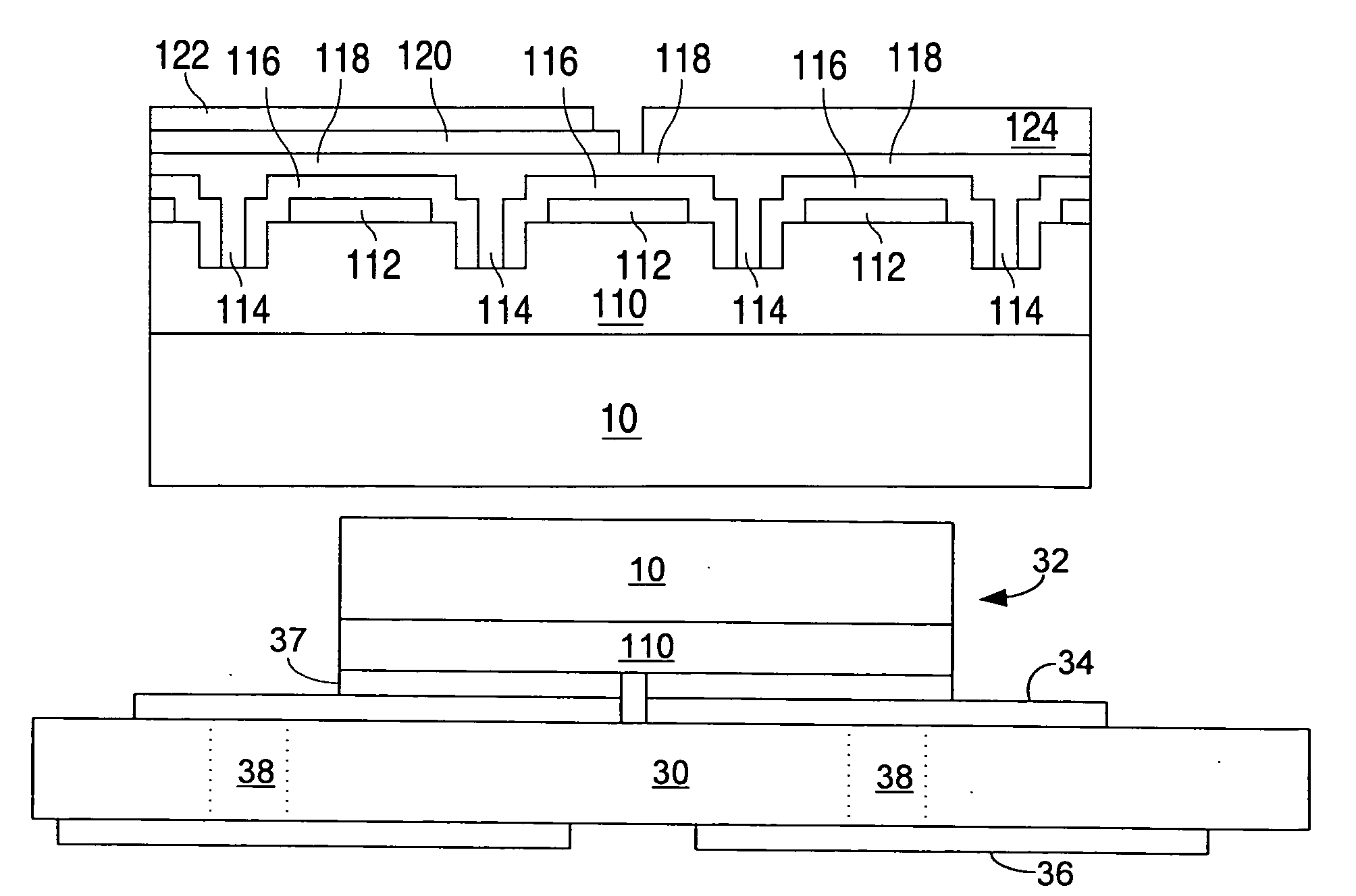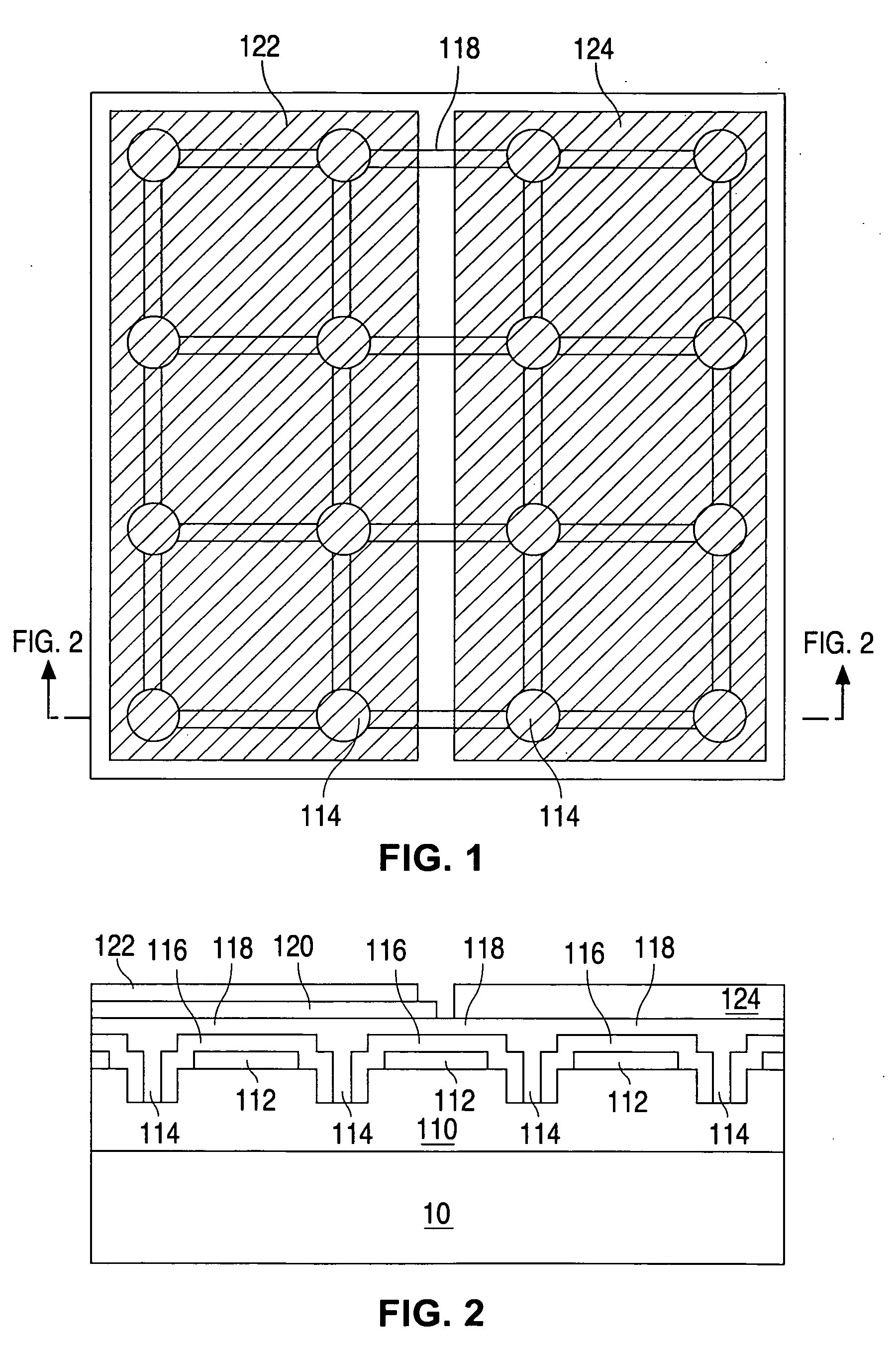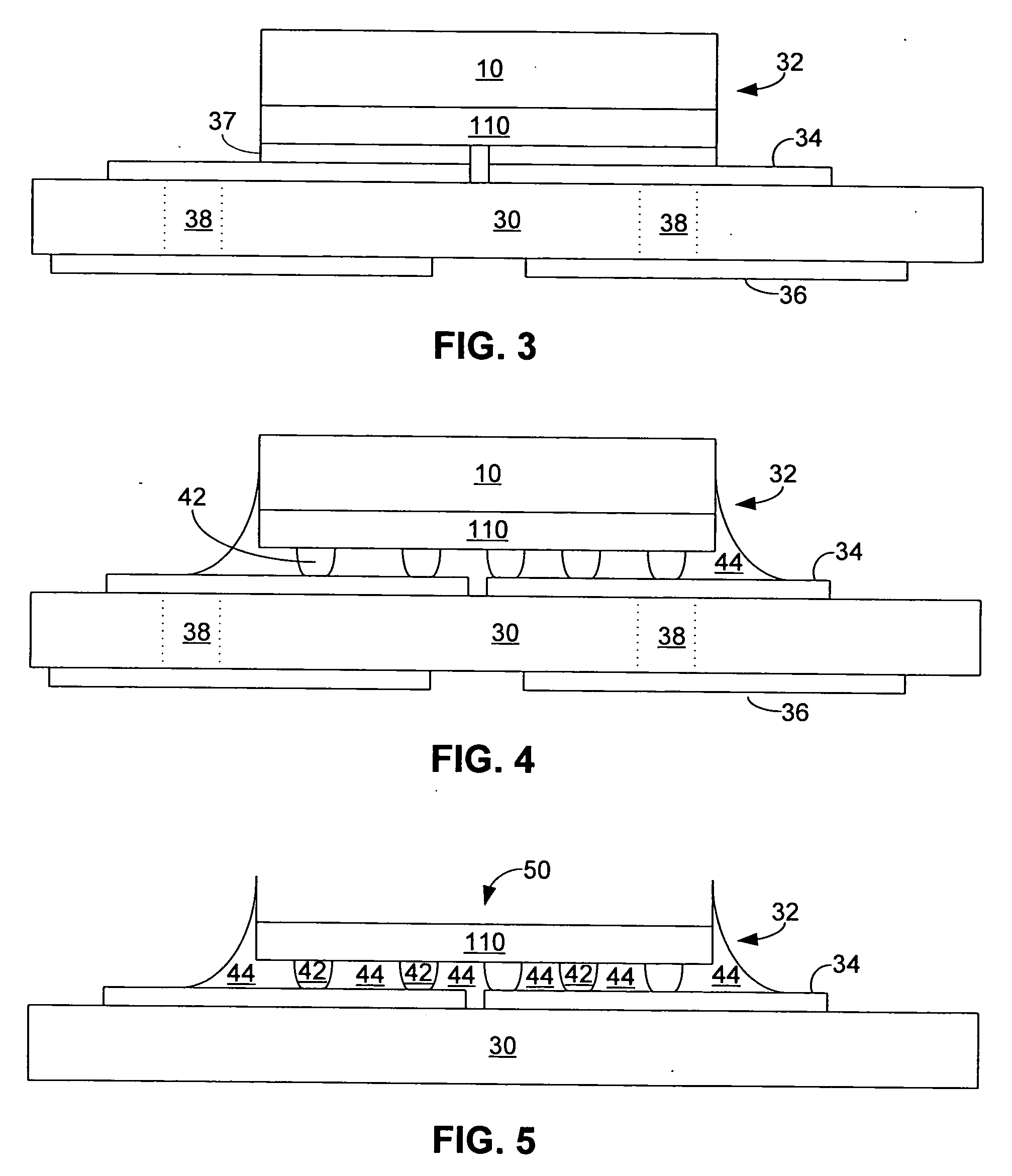Method of removing the growth substrate of a semiconductor light emitting device
a light-emitting device and growth substrate technology, applied in the field of light-emitting devices, can solve the problems of poor extraction efficiency and degrading the performance of the devi
- Summary
- Abstract
- Description
- Claims
- Application Information
AI Technical Summary
Benefits of technology
Problems solved by technology
Method used
Image
Examples
Embodiment Construction
[0021] In accordance with embodiments of the invention, a semiconductor light emitting device is attached to a carrier by a connection that permits removal of the growth substrate. Though the examples below describe flip chip semiconductor light emitting device, embodiments of the invention may be applied to vertical semiconductor light emitting devices, where the first electrical contact is disposed on a bottom side of the semiconductor structure and the second contact is disposed on the top side of the semiconductor structure.
[0022] A standard epitaxial structure is first grown on a growth substrate. In III-nitride devices, an n-type region is typically grown first over the growth substrate. The n-type region may include multiple layers of different composition and dopant concentration, including, for example, preparation layers such as buffer layers or nucleation layers which may be n-type or not intentionally doped, release layers designed to facilitate release of the growth su...
PUM
 Login to View More
Login to View More Abstract
Description
Claims
Application Information
 Login to View More
Login to View More - R&D
- Intellectual Property
- Life Sciences
- Materials
- Tech Scout
- Unparalleled Data Quality
- Higher Quality Content
- 60% Fewer Hallucinations
Browse by: Latest US Patents, China's latest patents, Technical Efficacy Thesaurus, Application Domain, Technology Topic, Popular Technical Reports.
© 2025 PatSnap. All rights reserved.Legal|Privacy policy|Modern Slavery Act Transparency Statement|Sitemap|About US| Contact US: help@patsnap.com



